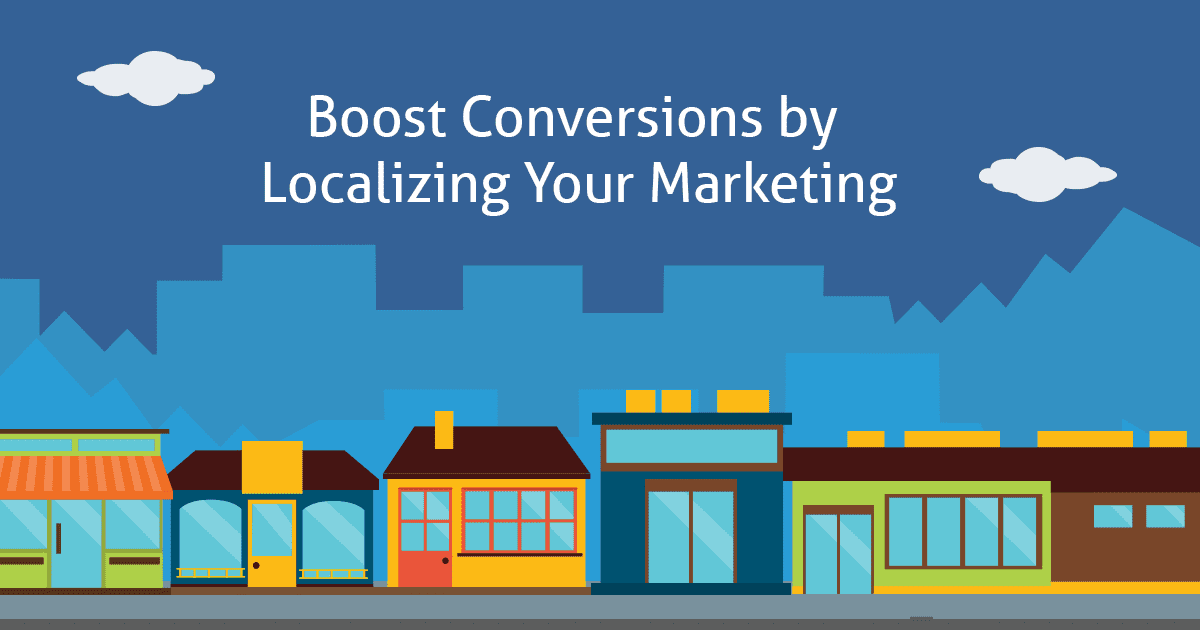We’re living in a hyper-global, hyper-local world. Ironic, no?
Here’s what we mean: While our marketing reach extends beyond borders, and across many digital mediums around the world, consumers are more focused on what’s happening in their own communities. They care about and relate to, things in their backyard—the events, the politics, the restaurants, the food, the weather—you name it.
This presents a tricky challenge for marketers.
On one hand, marketers seek to standardize their marketing—meaning, they display the same messaging across all forms of content, regardless of end user location. It’s easy to see why marketers do this; it’s easier! There are obvious cost efficiencies, just one version of all creative, you can quickly execute, and…well, you get the idea.
On the other hand, savvy marketers are catching on to the fact that speaking to consumers as individuals—at the local level—delivers far better value in terms of ROI.
What is Marketing Localization?
Marketing localization means framing your messaging in terms of the local community. It’s taking your core marketing messages and pushing them out in a way that’s meaningful to local communities. It’s not just a language translation; localization takes into account the local culture, politics, environmental and economic influences.
Localization does not mean that you stop marketing on a global scale, not at all. What it means is that you can market globally, but leverage localization strategies.
Things to consider when localizing your content
Ready to rock this global economy? Here’re a few things to keep in mind when crafting your localization strategy:
- Mind the language: This one is hit-ya-on-the-head obvious. 70% of the world does not speak English! A simple translation of your website and marketing materials can yield some great results. But take heed, translating will only get you so far. To do things right, you need to leverage someone within the local community. co frames it this way: “You need to capture nuances, understand current language usage and even be prepared to present things in the way that your markets will respond best to.”
- It’s not just the language: Evaluate the images you use, the call to actions, the taglines, everything. Are they speaking to local markets? Are they messages and images that locals will be able to relate to?
- Speed counts: If your website is slow to load outside your business’ headquarters, it’s probably time to upgrade your infrastructure. For example, consider investing in a content delivery network (CDN) to help your site content load fast, no matter the location.
- Consider the distribution channel: A social media network or app may be huge in the U.S. but not so big in Russia, or Brazil.
Do your research. Get into the minds of locals by evaluating absolutely everything. And remember, start by making zero assumptions.
Consider these fantastic examples of marketing localization
1. Kentucky Fried Chicken
The king of fried chicken successfully won over China. They did it by localizing their product. Rather than offering the same menu they’d offer in the U.S., they created a China-specific menu, complete with local favorites, like rice side dishes, Chinese porridge, traditional breakfast bread and more.
2. Samsung
The Korean company, Samsung, made a splash in New York City’s Meatpacking district by paying special attention to the local tastes and interests of consumers there. They took note of local interest in art and design and hosted and art exhibit that attracted thousands of visitors.
3. Apple
Remember Apple’s TV ad campaign, featuring a hipster “Mac” person and a boring PC man? Apple realized this wouldn’t go over well in Japan, where it’s seen as low class to criticize a rival. Instead, Apple leveraged a favorite Japanese comedy troupe and an entirely different ad concept to drive home the messaging.
Are you localizing your marketing efforts? We want to hear from you. Tell us how you’re doing it, on Twitter or Facebook.


